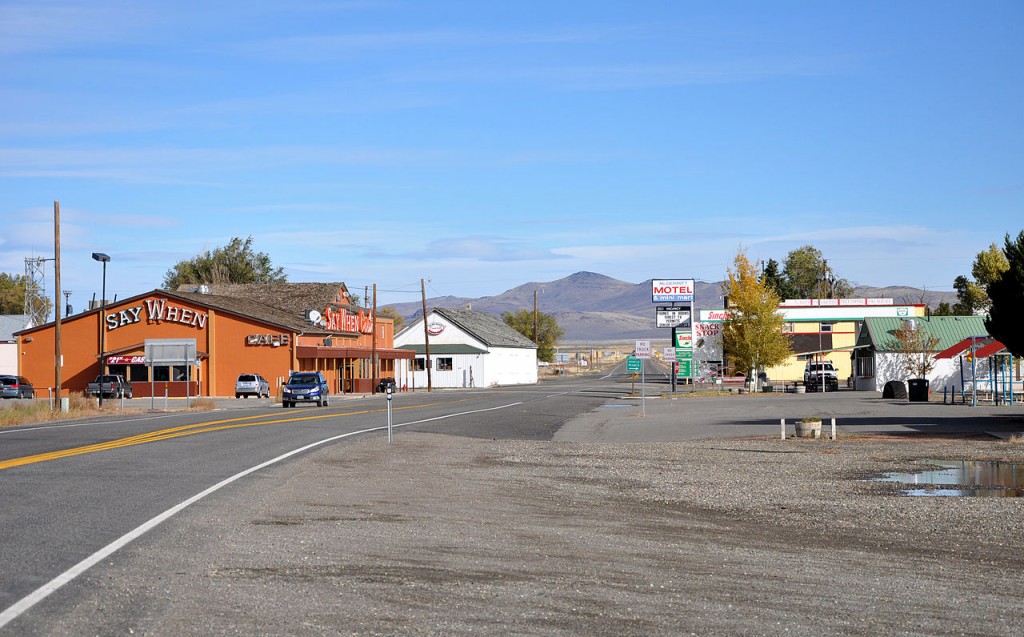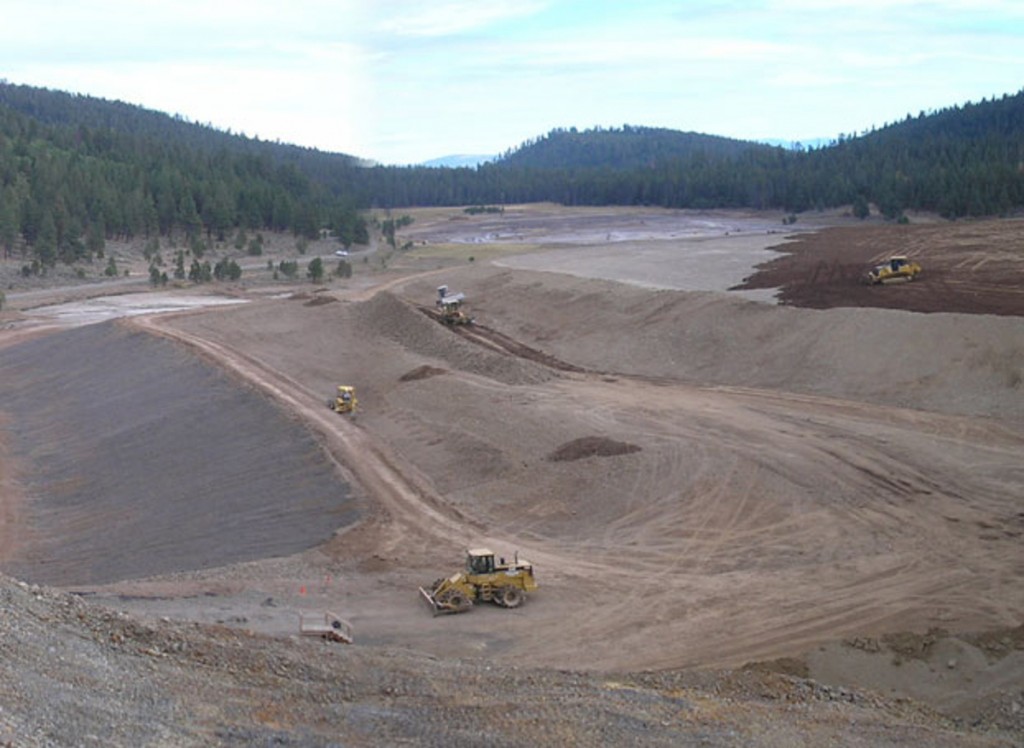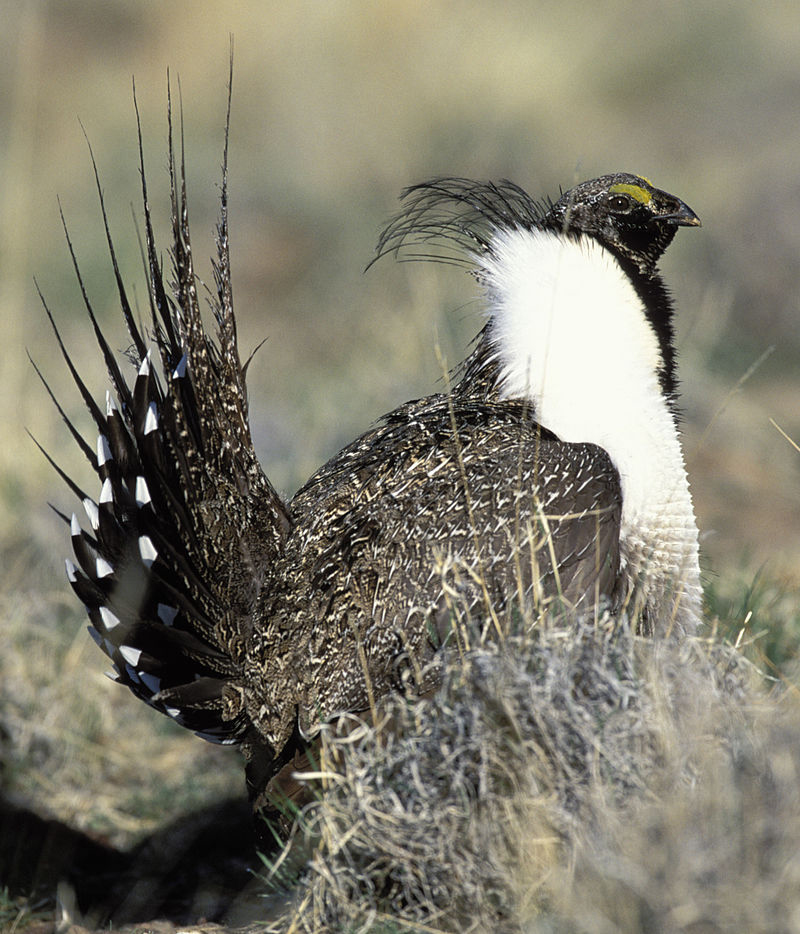Image Source: “Mcdermitt nevada-oregon skyline” by Finetooth – Own work. Licensed under CC BY-SA 3.0 via Commons
Barbara H. PetersonFarm Wars
Once there was a cowboy who let his herd of cattle roam free on thousands of acres of wilderness. He knew that they would live in harmony with the other critters, and that the land would benefit. He made sure that there was plenty of water and plenty of room so that the land would flourish. You see, if given enough room, critters are good for the land. They eat the overgrown forage and leave behind fertilizer that helps new forage to grow, which nourishes every other critter. Each critter has enough room to get out of the other one’s way, and everyone is happy.
That is, until the government in its infinite “scientific” wisdom, decides that cattle are bad for the land.
But is that the real reason that cattle ranching, as it has been done for over a hundred years, is now scheduled to become obsolete? A thing of the past – something to be disdained and thrown to the curb?
Picture a pristine wilderness devoid of the ravages of civilization and industrial development. Birds flying overhead and deer roaming free. Paradise as far as the eye can see. And in the middle of this haven designated as “public lands” set apart to be protected by the benevolence of the Federal Government’s Bureau of Land Management (BLM), is an open pit uranium mine.
Say what??? You have got to be kidding me! Nope. This is what the BLM has on the back burner for the Malheur Wilderness area.
And the cowboys? Well, the last ones who attempted to get in the way of this takeover of land for the “public good” are now sentenced to 5 years in prison and branded as terrorists for protecting their land and cattle and forced to “grant the BLM first right of refusal if the Hammonds ever sold their ranch.”
The Dark Side of Environmental Conservation
Environmental conservation is a good thing. But is that what is really being done by the BLM when it takes over land? Maybe what the BLM is actually doing is grabbing land in the name of environmental conservation and placing it under the sole control of the government and out of the hands of we the people in order to do with it as the government pleases.
The lands that the government collects are called “public lands.” The BLM is charged with managing “public lands,” and routinely leases and sells mineral rights on the very same lands that it is supposed to manage and protect.
BLM’s Planning Manual 1601 explains the use of public lands:
Land use plans ensure that the public
lands are managed in accordance with the intent of Congress as stated
in FLPMA (43 U.S.C. 1701 et seq.), i.e., under the principles of
multiple use and sustained yield. As required by FLPMA, the public lands
must be managed in a manner that protects the quality of scientific,
scenic, historical, ecological, environmental, air and atmospheric,
water resource, and archaeological values; that, where appropriate, will
preserve and protect certain public lands in their natural condition;
that will provide food and habitat for fish and wildlife and domestic
animals; and that will provide for outdoor recreation and human
occupancy and use by encouraging collaboration and public participation
throughout the planning process. In addition, the public lands must be
managed in a manner that recognizes the Nation’s need for domestic
sources of minerals, food, timber, and fiber from the public lands.
According to the BLM Planning Manual, the agency is charged with
maintaining the ecological environment of its public lands. That is, of
course, unless it decides that mining for uranium supersedes any such
directive.
Uranium on BLM-Administered Lands in OR/WA
In September 2011, a representative
from Oregon Energy, L.L.C. (formally Uranium One), met with local
citizens, and county and state officials, to discuss the possibility of
opening a uranium oxide (“yellowcake”) mine in southern Malheur County
in southeastern Oregon. Oregon Energy is interested in developing a
17-Claim parcel of land known as the Aurora Project through an open pit
mining method. Besides the mine, there would be a mill for processing.
The claim area occupies about 450 acres and is also referred to as the
“New U” uranium claims.
This is conservation? Here is the open pit uranium mining proposal:Uranium mine plan
Oregon Energy’s proposal calls for extracting ore from a mile-long, 600-foot wide, 250-foot deep open pit 10 miles west of McDermitt and 3 miles north of the Oregon-Nevada border. The mine, adjoining the former Bretz Mercury Mine, a contaminated open-pit site from the 1960s, would cost $200 million to develop and uranium extraction could continue for up to 20 years, said Oregon Energy President Lachlan Reynolds.
Plans call for the ore to be crushed and mixed with an acid solution in enclosed vats to leach out the uranium, he said. The acid would bond with the uranium and when dry become a sand-like powder called uranium oxide concentrate, or yellowcake. Yellowcake would bring $52 per pound and could fuel nuclear reactors or be processed into weapons.
Tuttle, spokesman for the Portland-based Center for Environmental Equity, foresees environmental problems.
The likelihood of sulfuric acid being used in processing the ore means it could remain in the mine tailings after milling, he said. The snag is that sulfuric acid tends to continuously leach out heavy metals that occur naturally in waste rock and tailings, contaminating ground water.
“Just because you are through with the processing, years later you still have the issue with that interaction,” he said.
But probably the biggest environmental hurdle for the Aurora mine would be the release of mercury, Tuttle said. “The whole Owyhee Reservoir has been affected by naturally occurring background mercury,” and uranium mining could release more, he said.
http://www.oregonlive.com/pacific-northwest-news/index.ssf/2012/01/malheur_county_targeted_for_go.html
(click to enlarge)
Image Source: http://www.world-nuclear.org/info/nuclear-fuel-cycle/mining-of-uranium/uranium-mining-overview/
And all this in a wilderness area designated for “protection” by the
BLM from the encroachment of “destructive” practices, and where cattle
grazing is quickly becoming a restricted practice.And who profits from this besides the companies doing the dirty work?
Once projects are approved, the BLM is responsible for ensuring that developers and operators comply with use authorization requirements and regulations. Although the Bureau of Indian Affairs issues mineral leases on Indian lands, the BLM approves and supervises mineral operations on these lands.But by all means, let’s imprison a couple of cowboys as terrorists for setting a backfire to protect their property and cattle from destruction when they had been doing the same thing in conjunction with the BLM for years.
Companies pay for development of public energy resources. Total royalty, rentals, and bonus payments vary from year to year. In fiscal year 2008, $5.5 billion was paid to Federal and State governments for Federal onshore energy leasing and production.
http://www.blm.gov/wo/st/en/prog/energy.html
Enter the GrouseFIVE DECADES LATER: This 2006 photo shows cleanup work at the long-closed Lucky Lass and White King uranium mines outside of Lakeview. (Source: Willamette Week)In Malheur County, the poorest in Oregon, there is wealth buried in the ground.
It’s uranium—and the county has what may be the biggest sources in the U.S.
For the first time in decades, someone wants to mine uranium in the state. Oregon Energy LLC, owned by an Australian company, hopes to extract at least 18 million pounds of uranium oxide from a 450-acre southeast Oregon site called the Aurora property.
Uranium oxide, better known as yellowcake, now trades near $52 per pound, six times its value a decade ago. Yellowcake is used to fuel nuclear reactors and can be processed into a form suitable for nuclear weapons.
But the project, three miles from the Nevada border, worries some industry critics. Uranium mining—not practiced in Oregon since the 1960s—often left hidden poisons in the earth and groundwater. The Aurora project would be the first test of a 1991 Oregon law aimed at policing mining operations that use chemical extraction…
Machines will scrape the earth from an open-pit mine a half-mile in length. The heavy clay soil, placed in vats, will be sprayed with a chemical mixture that probably contains sulfuric acid. The acid bonds with the uranium, which is extracted, dried and sold as yellowcake. The leftover dirt is discarded in a “tailings pile” near the site.
http://www.wweek.com/portland/article-18572-a_glowing_opportunity.html
Aurora uranium mine project on hold: According to Oregon Energy, “the project is on ice and not moving forward due to uranium prices and sage grouse issue.” (NRC Memo Dec. 12, 2013)It appears that the only thing standing in the way of yet another toxic fiasco is the sage grouse. Not the obvious pollution that is very likely going to lead to a superfund site, not the health of all sorts of animals or hikers or anyone that depends on water in the area to live, no, just one tiny little sage grouse.
The mine area, according to Chris Hansen of the Oregon Natural Desert Association (ONDA) , is “absolutely core sage grouse habitat.” Sage grouse have been in decline in Oregon. According to ONDA, there is warrant to list the rapidly disappearing sage grouse under the Endangered Species Act, but thanks to politics and a backlog with the U.S. Fish and Wildlife Service, the sage grouse is on a waiting list with 250 other species. Two drainages of Cottonwood and McDermitt Creeks go through the site, and Fish and Wildlife documents show that the creeks or their tributaries are endangered species listed Lahontan cutthroat trout habitat.
Oregon Energy plans to process the uranium on the site, which is also a concern for Hansen. (Eugene Weekly Sep. 29, 2011)
http://www.wise-uranium.org/upusa.html
With its open pits, acid drainage, and air and water pollution, mining is the dirtiest of all resource developments, accounting for more Superfund toxic cleanup sites than any other industry.
http://articles.latimes.com/2007/oct/16/local/me-mining16
Image Source: “SageGrouse21” by Gary
Kramer – U.S. Fish and Wildlife Service Digital Library System. Licensed
under Public Domain via Commons
The Hegelian Dialectic: Problem, Reaction, SolutionConsider this:
Problem: The government wants the land.
Reaction: Demonize cattle ranchers and blame the cattle for a decline in the sage grouse in order to free the land for alternate government use by pitting environmentalists against cattle grazing and the ranchers to gain the required reaction of placing the land under further restrictions in order to be protected from environmental harm.
Solution: The government gets the land.
The government wants the land for “conservation” efforts. In order to achieve this, the ranchers with their cattle and any private property interests need to go so that there is no interference. This way the land can be “protected” by the BLM and used for any purpose that the government wants it for, including uranium development.
The question then becomes – who will get the land – the sage grouse or uranium miners. In either case, the ranchers are out and the cattle can be consigned to your friendly neighborhood CAFO (concentrated animal feeding operation).
The rancher takes the blame, and the government does as it pleases. If the grouse is listed as an endangered species, the land is taken for conservation. If it isn’t, the land is taken for corporate energy and uranium mining. A win/win for big government. It’s called hedging your bets. Either way, the little guy loses and the government wins, and the rancher is left holding the bag. He either gets booted out by the sage grouse, or booted out by uranium interests, and there goes another source of local food and independence, leaving us ever more dependent on the corporate food chain.
Since a decision was made to not list the sage grouse as an endangered species in 2015, guess which interests won? You’ve got it – mining. Now the only problem left is to work out how to make the energy industry operations appear “beneficial” to the environment so as not to concern the sage grouse supporters, and to declare more public land as “cattle free,” again, for the benefit of the environment. Not a problem that a good Public Relations campaign can’t handle. Cha-Ching!
Originally published at: GIAnalytics
UPDATE:
Oregon Standoff: Robert ‘LaVoy’ Finicum Dead, Bundys Arrested
The police in cooperation with the FBI got their men about 20 miles north of Burns, Oregon on Tuesday, January 26, 2016. Mark that day in history, folks, as the day the old west was given a warning shot. A warning shot that said very loud and clear to the American public: Don’t mess with the government, don’t question authority, don’t stand up for the Constitution or your supposed “rights,” just submit or die.
©2016 Barbara H. Peterson








No comments:
Post a Comment